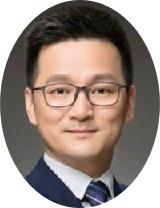
Dear Researchers,
We are delighted to announce a special issue on the topic of "Hydrogel Microspheres and Regenerative Medicine" in Biomaterials Translational.
Biomaterials Translational (BMT) is a hybrid international journal focusing on the interface of translational medicine, biomaterials science and engineering. Articles in our journal have been cited by some databases like PubMed, Scopus etc.
The objective of this special issue is to provide a platform for sharing the latest research findings and advancements in the use of hydrogel microspheres in regenerative medicine, bringing together scientists, engineers, and clinicians.
In recent years, hydrogel microspheres have emerged as a fascinating area of research due to their distinctive properties, including high water content, biocompatibility, and the ability to tune their mechanical and chemical characteristics. These properties make hydrogel microspheres extremely versatile for various biomedical applications, particularly in regenerative medicine. The encapsulation and controlled release of bioactive molecules, such as growth factors and therapeutic proteins, within hydrogel microspheres hold tremendous potential for tissue engineering and regenerative medicine strategies.
This special issue encourages the submission of original research papers and review articles that focus on the synthesis, characterization, and applications of hydrogel microspheres in regenerative medicine. We invite authors to explore a wide range of topics related to hydrogel microspheres, including (but not limited to):
- advances in the synthesis and fabrication techniques for hydrogel microspheres
- characterization and evaluation of hydrogel microspheres for their application in regenerative medicine
- biofunctionalization strategies to enhance the cellular response to hydrogel microspheres
- development of controlled release systems using hydrogel microspheres
- utilization of hydrogel microspheres as scaffolds for tissue engineering
- exploration of hybrid hydrogel microspheres for multi-functional applications
- investigation of hydrogel microspheres for drug delivery in regenerative medicine
- in vivo studies and clinical trials that employ hydrogel microspheres
Manuscripts submitted for this special issue will undergo a rigorous peer-review process to ensure the highest quality of scientific contributions. During the submission process, please indicate that your manuscript is intended for the special issue on "Hydrogel Microspheres and Regenerative Medicine." Manuscripts should be submitted online at https://www2.cloud.editorialmanager.com/biomater_transl/.
We eagerly await your submissions and are excited to showcase the latest advancements in the field of hydrogel microspheres and their pivotal role in regenerative medicine. If you have any questions or require additional information regarding this special issue, please do not hesitate to reach out to the Guest Editors.




